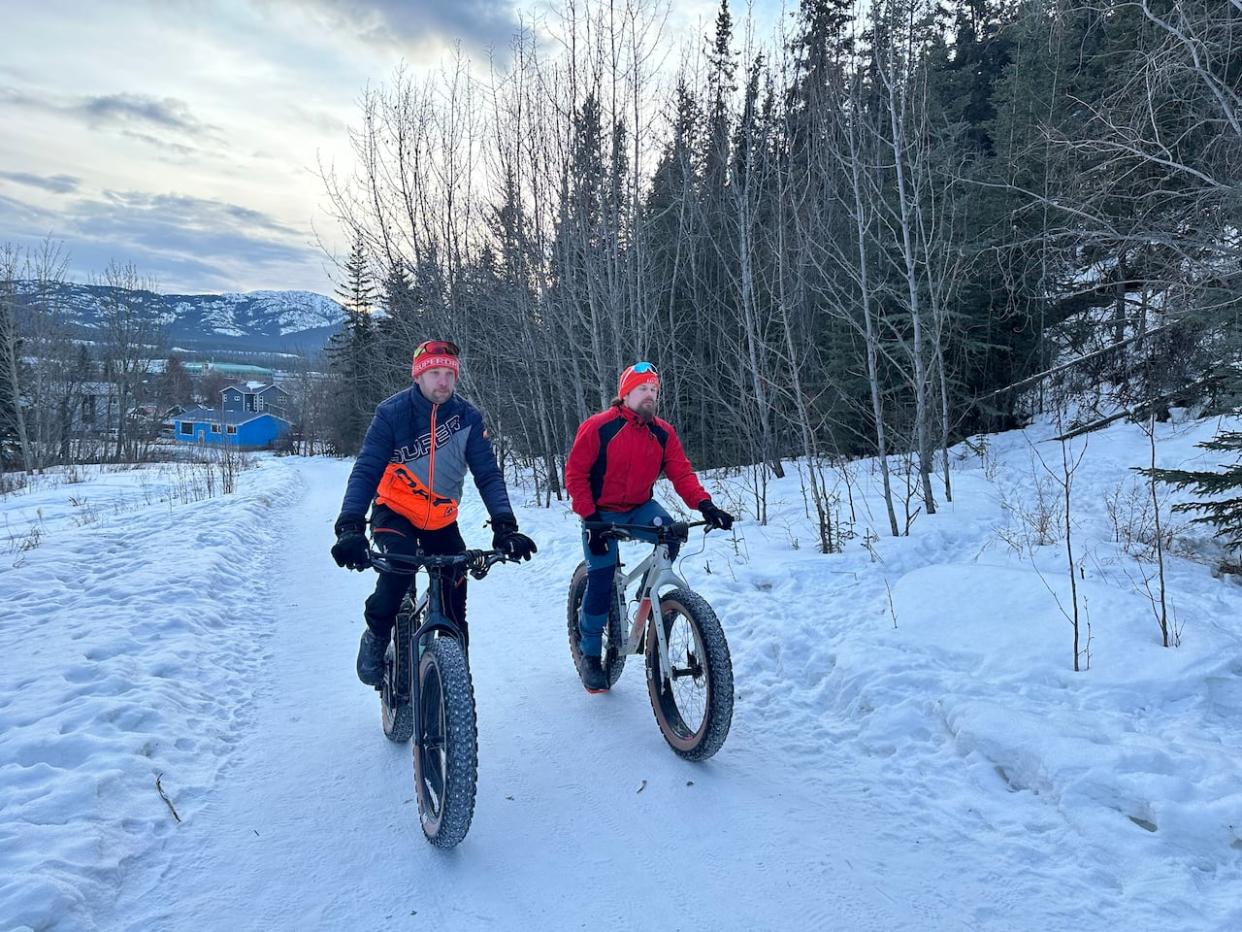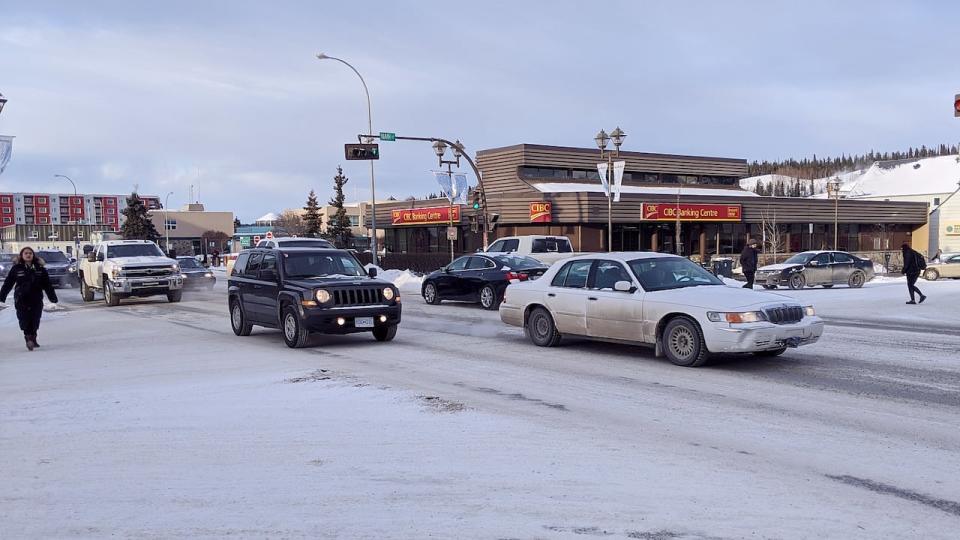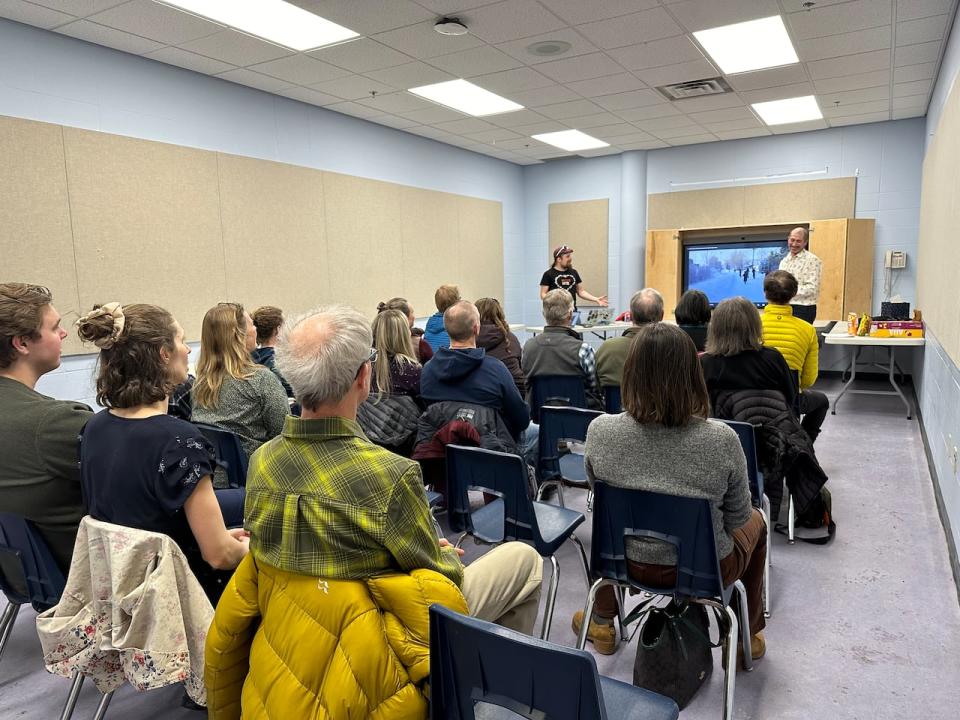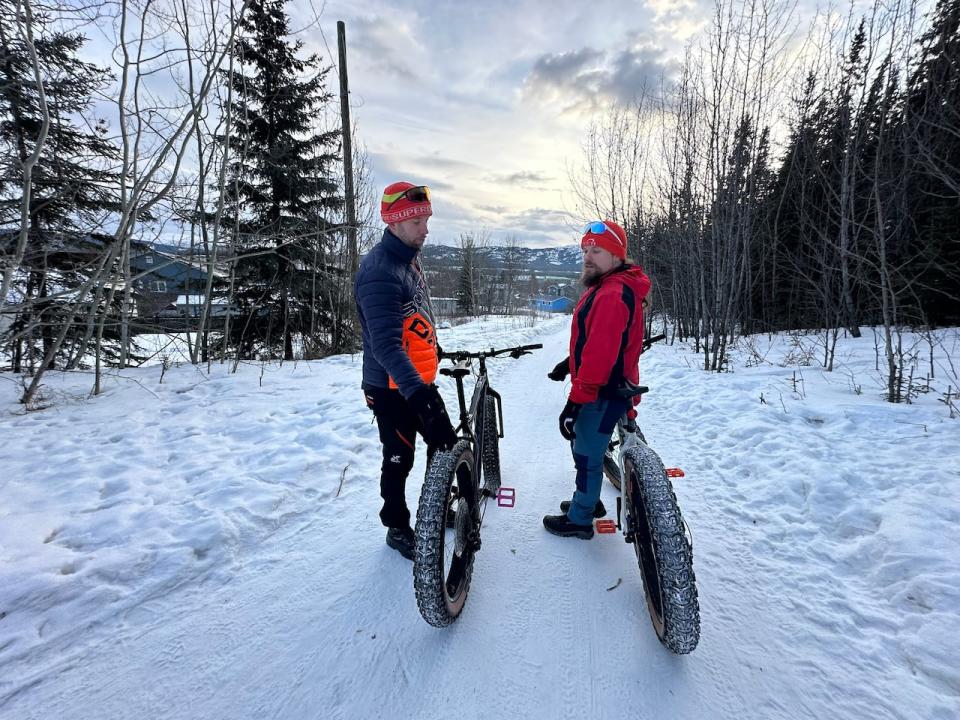Finnish cyclists say biking makes sense year-round — even in Northern cities

- Oops!Something went wrong.Please try again later.
For many Canadians living north of 60, the idea of getting through the winter without four-wheel drive is a tough sell.
But this week, two Finnish cyclists travelled thousands of kilometres to Whitehorse make the pitch. The visit was arranged by the Cycling Assocation of Yukon, and made possible with a grant from the City of Whitehorse.
Pekka Tahkola and Harri Vaarala are from Oulu, Finland, which proclaims itself as the "winter cycling capital of the world."
Their review of Whitehorse roads: too wide.
"Most of the streets feel quite unsafe," said Vaarala, who works as a traffic engineer for the city of Oulu. "Because the streets are so wide and the average speed of car traffic is so high, even in the city centre."

Vehicles and pedestrians travel through the intersection of Main Street and Second Avenue in downtown Whitehorse in 2020. (Chris Windeyer/CBC)
Takhola, an urban planner and "well-being engineer," agreed with this verdict. He says wide roads cause drivers to subconsciously drive faster. But in Whitehorse, they also suggest an opportunity.
"There is so much space, it would be so easy to build good infrastructure," he said, appearing to struggle to convey the full scale of potential as he gazed at a Whitehorse street. "It's just such... low-hanging fruit!"
Paths must be reliable, comprehensive
On Monday, the two met with City of Whitehorse operations and engineering staff, along with the Yukon government transportation branch, to share ideas and offer suggestions.
The main takeaway from that meeting: the city needs more bike lanes. But in order for those routes to be effective, the Finns say they must be protected, connected, and actively maintained.

Residents showed up to listen to a talk this week at Whitehorse's Canada Games Centre, on cycling in Finland. (Caitrin Pilkington/CBC)
"As a city planner, you have to think about cycling infrastructure as a network," said Vaarala. "If you are just building pieces here and there, it will be difficult to get people cycling around the city."
He describes paths that are built to be plowed easily, and in order of priority for riders who rely on them to get to work, school, or run errands. And just like roads built for cars, they must link.
"You can't possibly expect people who are going from A to B to suddenly evaporate somewhere and then appear again when infrastructure continues," said Takhola. "That doesn't work with any method of transportation."
Oulu as a cycling success story
Oulu is just 100 kilometres from the Arctic Circle. It has many of the same impediments to cycling as Whitehorse: there's heavy snow at times, subarctic temperatures, and freeze-thaw episodes. There's also sprawl, with many suburban neighbourhoods.
But despite these challenges, a significant number of the city's residents cycle to get around.
In Oulu, 22 per cent of trips year-round are made on a bicycle and the city boasts 930 km of connected bike paths. Takhola and Vaarala say nearly all children in the city cycle to school.
Takhola acknowledged that the idea of biking through the winter might sound like an arduous prospect to many Canadians. Speaking at a public talk at the Canada Games Centre in Whitehorse, he said it all comes down to good design.
"It's not that we are so tough," he said. "We cycle because we are wimps — because it is the easiest way to get around. If you build infrastructure that makes cycling fast, easy and comfortable… people will use it."
Forest Pearson, a member of the Whitehorse Urban Cycling Coalition and director of active transportation with the Cycling Association of Yukon, said he was blown away when he learned just how many residents of Oulu cycle year-round.
"It's astounding," he said. "We've been told [those numbers] are not achievable. And to find out that it's happening in a city that's the same latitude as Dawson City?"
For Takhola and Vaarala, building bike paths just makes sense. Vaarala says it's significantly less expensive than car infrastructure, and comes with a host of benefits.
"It's the best possible investment a city can make for the health and well-being of their citizens," said Vaarala.

To Vaarala and Tahkola, building bike paths in a city just makes sense. (Caitrin Pilkington/CBC)
It all seems so intuitive to Takhola that he can't quite believe it's such a big deal. He marvels at all the media coverage Oulu's bike paths have received over the years.
While care and maintenance of active transportation infrastructure makes up a relatively small percentage of Oulu's budget, Takhola claims they make it all back and more through the tourism revenue the attention generates.
For Pearson, the Finns' visit served to bring a sense of inspiration to Whitehorse, and helped show what's possible in the North.
"It's not winter that's a barrier to us," he said. "It's what we choose to invest in and what we choose to prioritize."

